John’s been in touch with how he builds each model train scene to create a visual ‘journey’ around his layout:
“Hi Al,
I thought I’d opine on a subject that is sometimes overlooked as we build our miniature railroad worlds.
My article here is on “focusing” or “guiding” our visitors to a scene.
A little background. In the real world as we visit a park, take a walk in the country, or amble through a museum, most of us will not remember in any detail 90% of the day.
On the way home as we look back at our adventure, we’ll remember specific parts of the day’s journey. Very little or at best most is not pinned to our memory.
So then, what made the memory flashbulb go off? The scene had something to draw our eye and hold it long enough to imprint a memory. Museums are expert at this, we don’t remember the hallway to the dinosaur bones, but remember the bones.
On my layout, I’ve tried to have 3 places where my visitors “take in a scene” as shown in the schematic picture.
In model building we often take great pride in the details of the model, place it on the layout and then have to mention those detail labors of love to our visitors as they are drawn to looking elsewhere.
In the pictures I have attached, I have taken from the perspective of the persons visiting my West Virginia mountains, and try to show how I’ve worked to stage the scenes.
Obviously since we are looking at the HO world from what would be equivalent to a helicopter window flying some 500 feet or more in the air, one will see a larger scene than if we were walking along the road in the real world.
That means some manipulation of space is required. I try to present the whole scene, then as one gets closer, mini-scenes of the total.
If my visitors are interested in details, such as in the “old mine” picture, I try to have some holes in the trees or places to look past the building to see those details. In the case of the old mine, I made a “funnel” in the hills to draw the eye past the new mine to the old one.
If I want to create focus, and I can, I provide extra light on a place, as shown by example the picture of my electrical sub-station. Each model train scene should ‘work’ on its own.
Since I’m modeling mountains in the coal mine sections, I have the advantage of adding details on levels. The picture of the old water tower above the mines supplying water to them is an example of elevating the scene to a different level, as is the picture of wooden bridge which is lower and more in the foreground. Going from eye level and continuing downward, I modeled a canyon under the bridges which drops to just 3” above the floor.
Most of what I have here has been sent in before in articles Al has been kind enough to post, but I thought I’d try to add a new perspective to what we do as we build our models.
I’m happy with the way this layout came out… but some of the radius of the turns are too tight, so I can’t run many of the locomotives and passenger equipment I’d like to have as part of the running environment.
So I’ve been slowing down on “new” construction as I’m going to be moving the layout to a new location. (groan) Starting in a month or so, I’ll be sawing the thing into pieces which I can move from the basement of the house to the top floor attic, some 3 floors (and 5 doorways!) up.
First job is to finish the upstairs room, put down a new floor, get lighting and power where I need it, paint walls and ceiling for background, and add some baseboard heat.
I hope to document the work on what will be very likely my last layout!
Regards,
John From Baltimore”
A big thanks to John for sharing how he creates each model train scene on his layout.
If you want to read his last post, it’s right here.
Now on to Henry – his last post is at the bottom of this one:
“Hello Alastair,
In response to some of the comments asking for a track plan, here are the track plans for both the upper and lower levels.
The two level will be connected via a linear climb along the two long walls of the garage, as I have no space for a helix.
I also include a link to a youtube video of a passenger train around the bottom level of my layout.
Thank You
Henry”
That’s all for today folks. Please do keep ’em coming.
And if you want to make a start on your own layout, the Beginner’s Guide is here.
Best
Al
PS Seen the latest ebay cheat sheet yet?

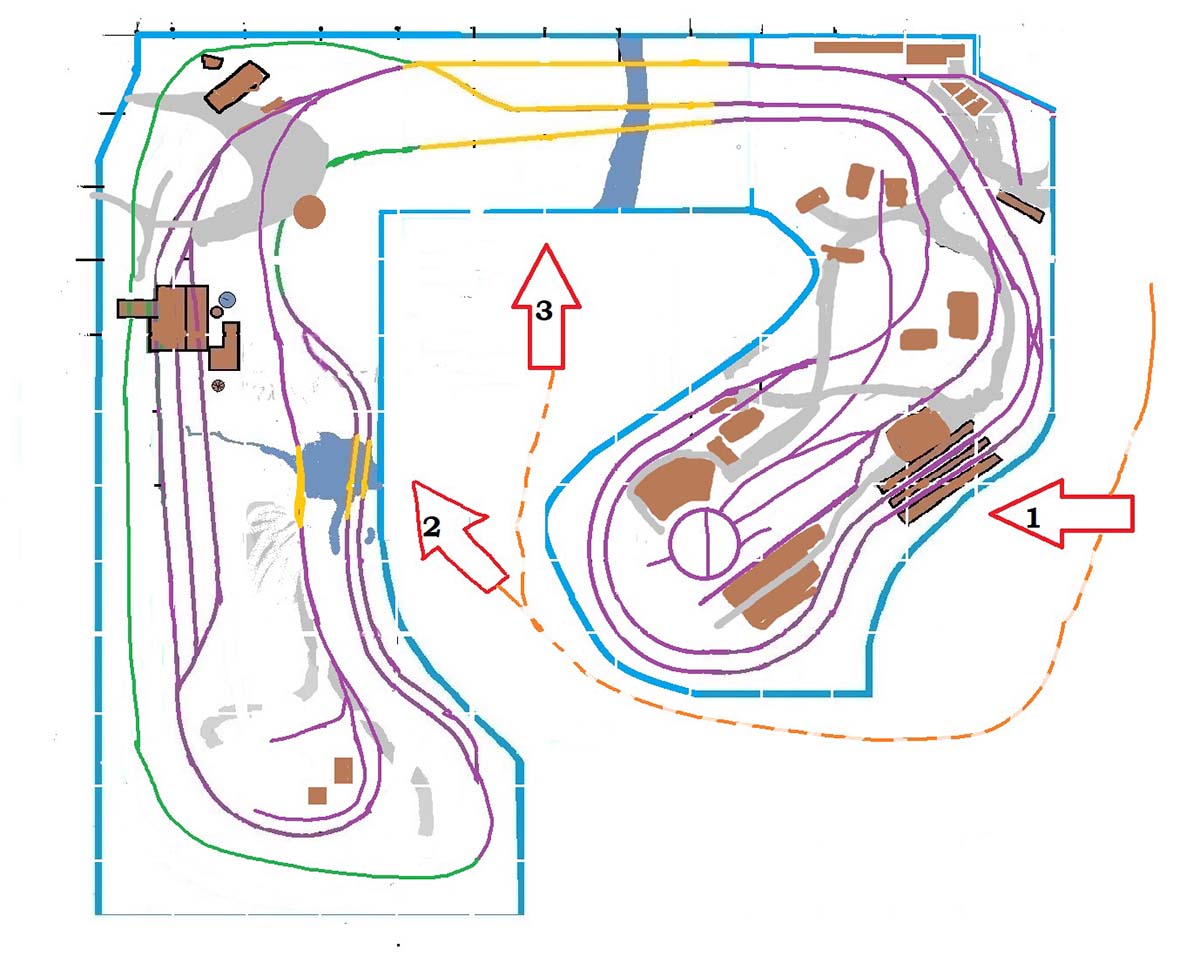

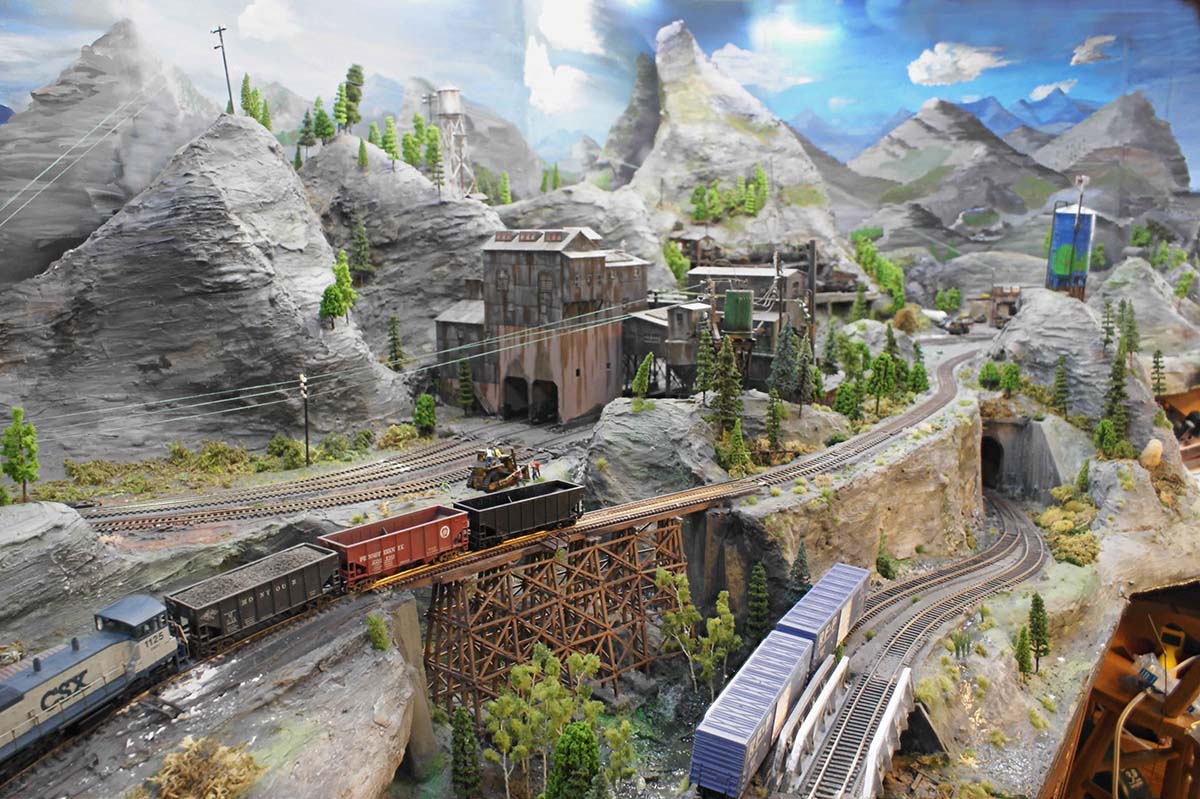
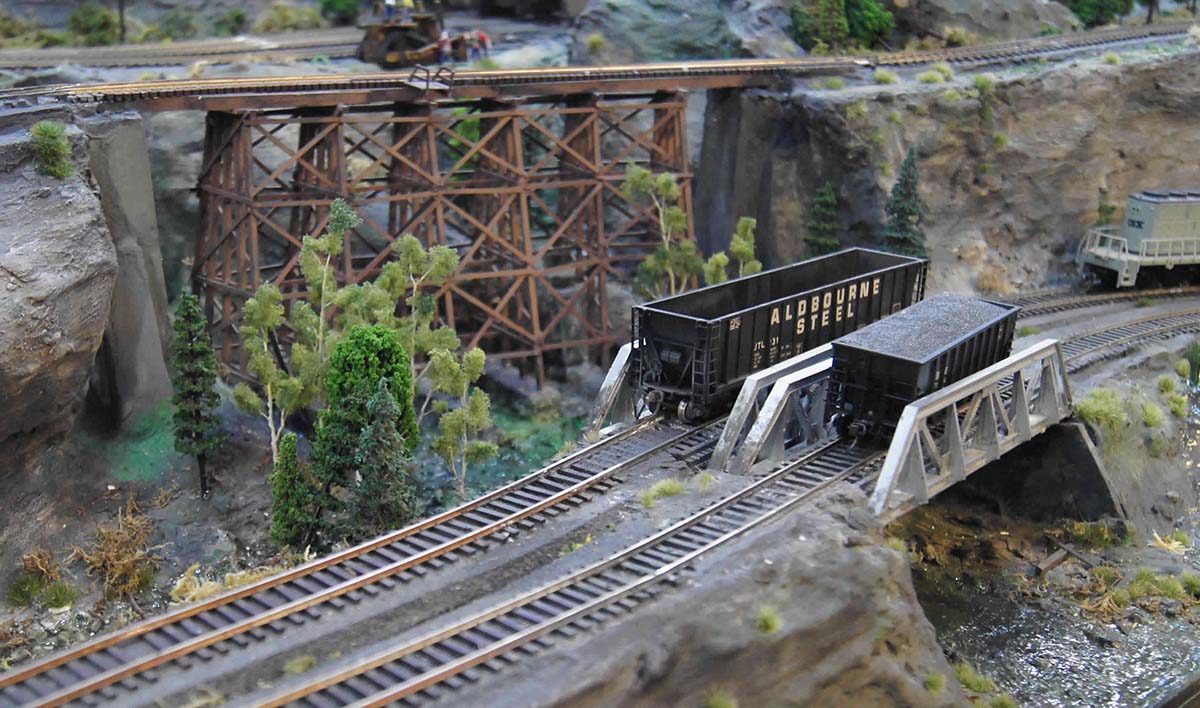


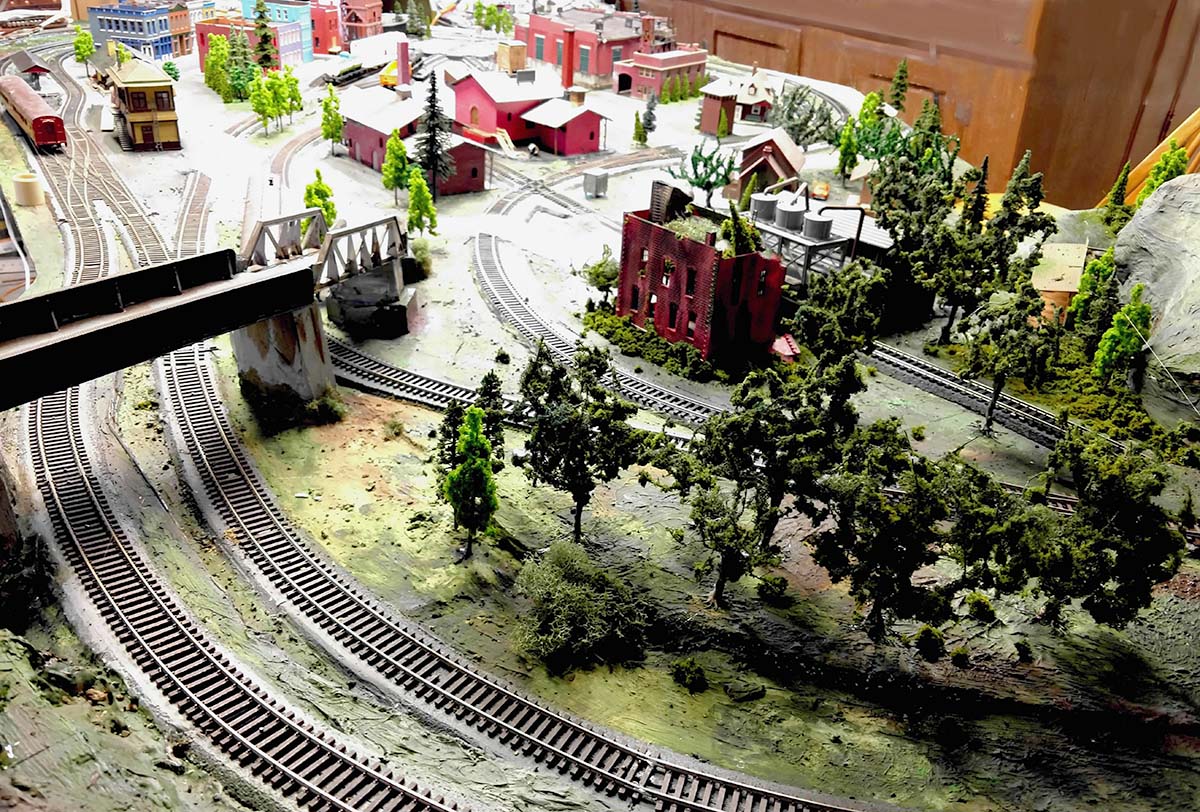
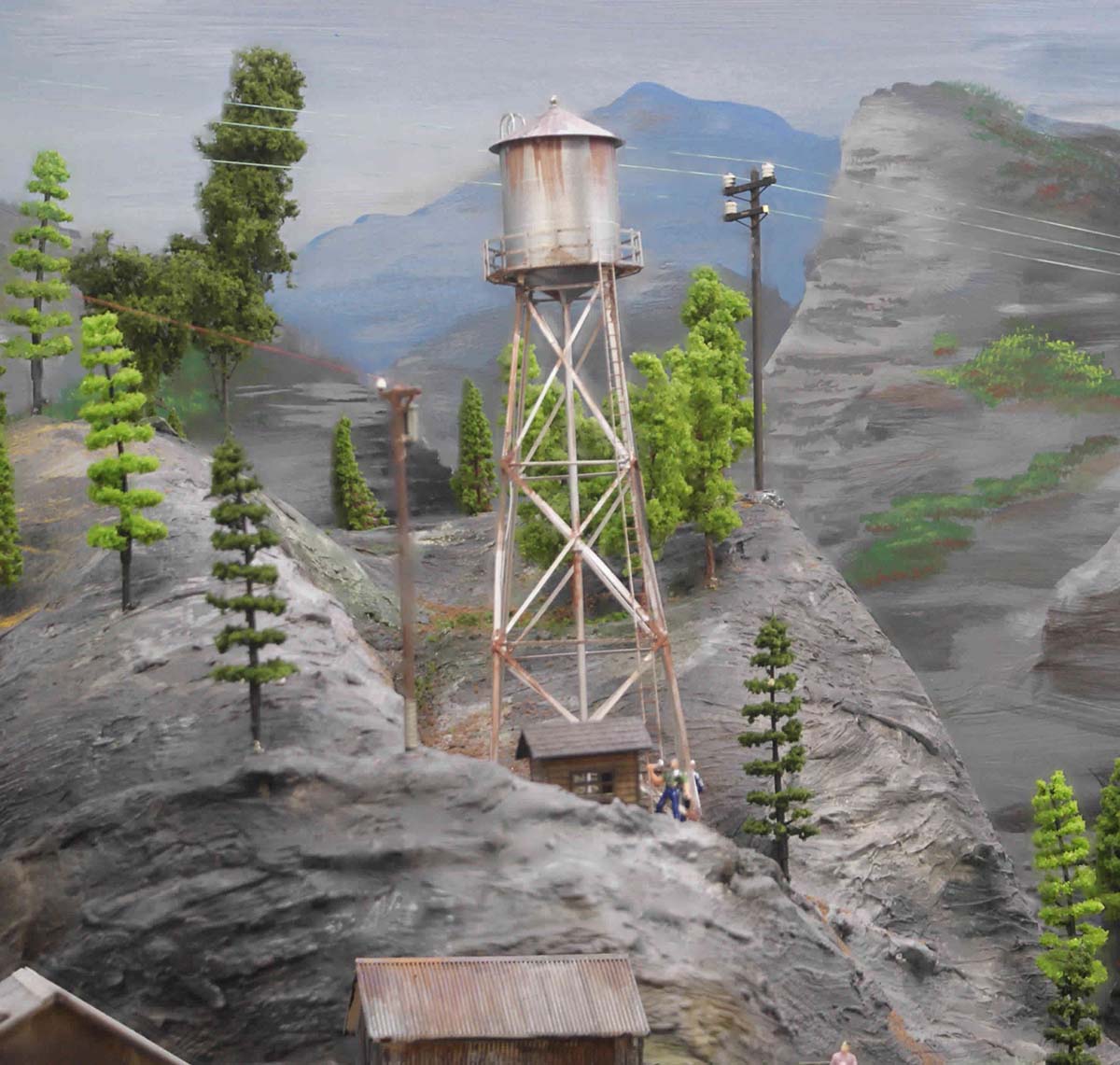

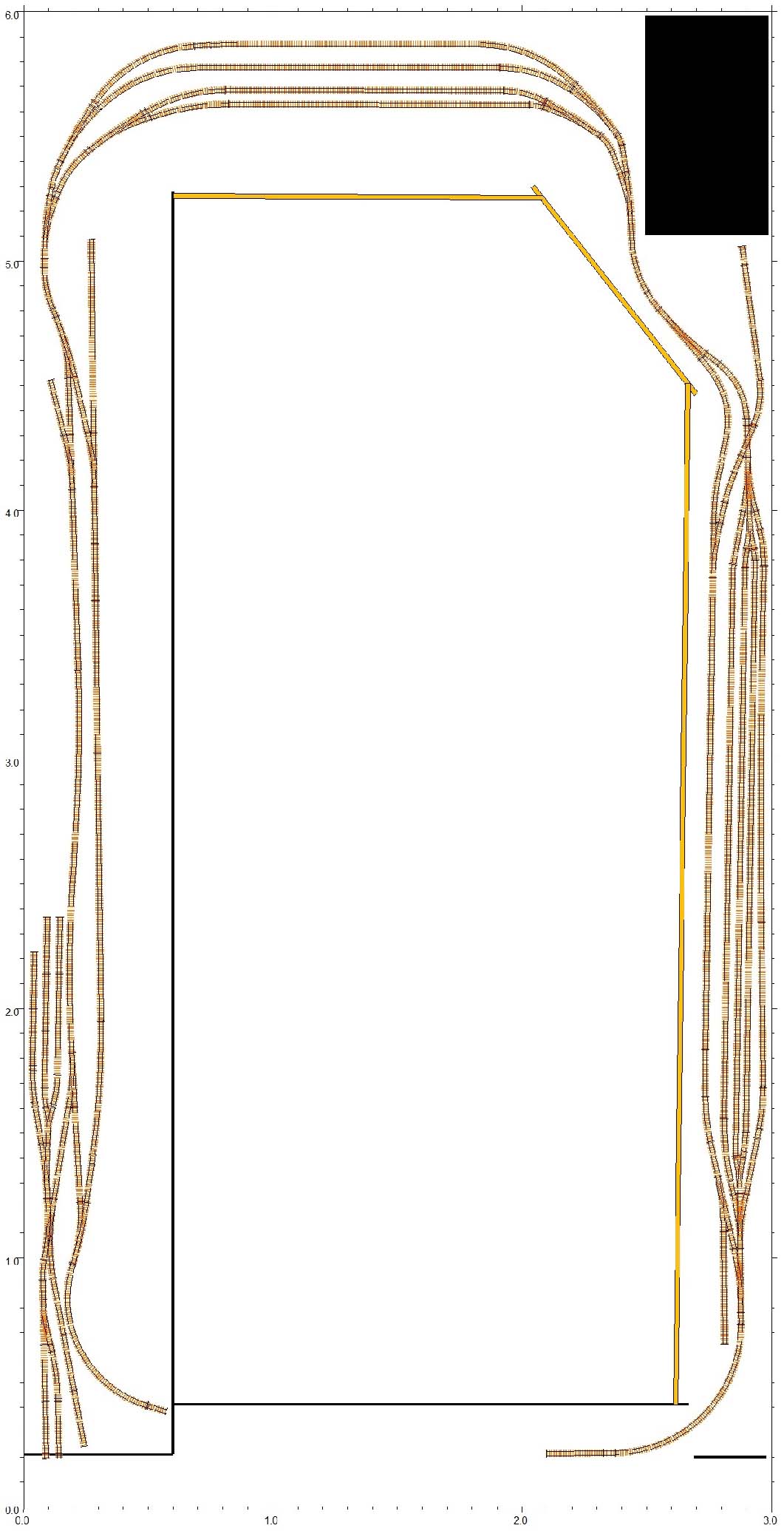

Hi John from Baltimore,
Your explanation of scenes is very true and exactly what is needed on most model railroads. I have tried to do this on my layout and get compliments from visitors when viewing my layout. They often go around my layout twice, the first time viewing the lower level (incomplete) and the second time, viewing the upper level which is complete. Thank you for this as it is very often not the case on other model railroad layouts.
Henry, thanks for the track plan and video of your layout.
Brian – the HOn3 guy in Knysna RSA
To ‘John from Baltimore’,
How refreshing!
Your layout looks great, but more importantly, your delivery was fantastic.
I refer to the due diligence of your respect of the language.
Your spelling, punctuation and grammar in general, was a sight for sore eyes.
All too often, people who ‘post’ on-line simply can’t be bothered to check that which they submit.
Well done.
Leigh from Lara, Australia.
John From Baltimore: WOW great bridges. simply terrific!!
Leigh. Whilst I appreciate your comment what is more important is the fact that contributors do send in an article rather than ensure it is grammatically correct and fully punctuated. Not everyone has the time to go over their contribution or indeed English may not be their first language. Everyone keep posting your articles and don’t worry about your spelling or grammar.
Jphn your scenic work is first class , those bridges and water features are fantastic …and Henry thats wa very nice layout on your video
John, very, very interesting and extremely well-written too.
I find myself in agreement with Leigh and Colin, if that’s possible!
Focusing in on the steel trestles / bridges in the full scale mode that scene doesn’t look safe for a full size freight train to cross that wide gorge. The top trestle as u look at it seems too have too much of a gap between stanchions.
The middle and lower supports all the way to left only being connected from the ends. Do you know what a full size diesel weighs ? AGE-C44-9w weighs in at a mere 210 tons.. I must say you do have a fantastic layout. Very scenic.
The Critic
GREAT work and results on the layout, John. The quality of your narrative matches them!! Thanks for posting.
Dear Leigh Rhodes, while I agree with you regarding grammar and spelling, may I remind you that this is first and foremost a hobby website and not an English class. We are more interested in diagramming layouts rather than sentences.
One of the best (& most needed) photo essay’s yet on model RR’ing!
John, thank you for your well presented narrative. I appreciate also your use of aerial perspective, in which the atmosphere between the viewer and distant objects renders them progressively fuzzier and bluer. Your use of that technique is especially well presented in the picture of the water tower, with the mountains in the distance behind; they look like they could be a mile away. Terrific!
Great job John looks great!!
Great workmanship I like the bridges.
Erick But u don’t know bridges. I worked with the New york central R/R 33 years from cleaning Box cars to a foremen in the boiler makers to Supervisor.
Leigh… I hear you Dude. All the people who say grammar doesn’t matter just imagine if everybody felt that way and languages began to degrade due to lack of effort and then we all spoke like we were living in some post apocalyptic world where nobody had any formal schooling. You’re kind to mention the article was well written.
It does matter for the sake of communication. Do you want your kids to be incapable of coherent writing or speech? I certainly would hope my lawyer or doctor could read.
Anyway, great stuff and I liked the video. Watching trains move through the miniature worlds where they exist is sort of magical and surreal at times.
Frank in Orlando
John…. great layout…..scenery, mountains and bridges are fantastic. I do not envy you try to move that to the attic. Good luck.
To everyone:
Not only is it useful and interesting to see y’alls track plans, but please add a note as to the scale you are modeling in would make them twice as interesting. I find myself spending time trying to guess the scale from the pictures rather than admiring the work. There are too many possibilities to easily figure it out with the possible exceptions of 3 rail O gauge and the rolling stock or the natural living scenery often gives away G gauge, but the 2 rail scales from S on down to Z are a lot more difficult.
@ Robert B. I don’t think the trestles are too far apart for prototypical operation or scale.
If you go to the Micro Engineering web site ( the makers of the trestles) and download their instructional PDF for the steel trestles, it has very complete design parameters and diagrams for various bridging types, combinations and supports and schemes to customize your bridge needs. The only unfortunate part is the dimensions given are for HO scale so you may have to rely on the diagrams or recalculate if modeling in a different scale such as N scale the other scale they also offer the bridge parts, track, and trestles. A major overlook I’d say.
Well I get the spelling and grammar bit all the time let’s just leave it to be fun and not to down any one now back to the topic when I saw South African I was hoping to see a Garret in action ! Not many of them left and few I see offered in the model world they were a solution to a problem by spreading the weight out they could use lighter rail saving money that could be used to make the line go further . Speaking of such I’m working more on my G garden elevated rail way the price of steel is very high now and with over 200 feet of track a lot is going into it !
To ‘John from Baltimore’, Your layout is fantastic. I am going to start a new layout shortly, O scale standard gauge, You have given me many ideas for the concept and scenery. Thanks for the inspiration.
ATT> Scenics Rme ; referring to the distance between bridge supports ,stantions,piers. ur point well taken.
Robert B
To John from Baltimore.
Great layout. When I saw the picture of the bridges over the gorge it reminded me of some of the spectacular pictures from years ago that when taken by the Great John Allen of his spectacular G&D layout. If your layout is 1tenth of that it’s a great layout.